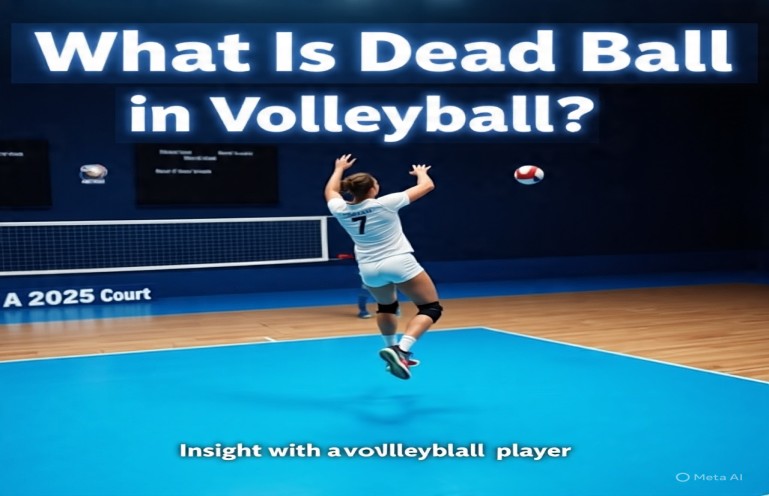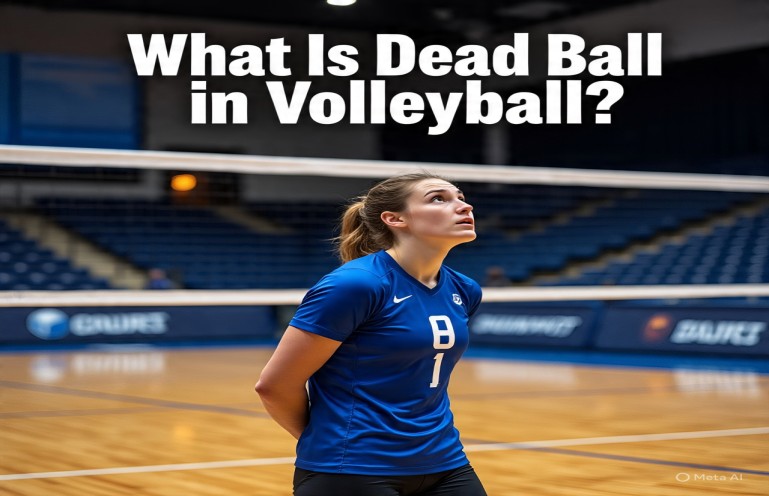Ever wondered what is dead ball in volleyball? Whether you’re a player diving into the action, a fan cheering from the sidelines, or a coach calling the shots, understanding a dead ball adds a new layer of excitement to the game. A dead ball stops play for a reason, and with new 2025 rules bringing fresh twists, it’s the perfect time to explore. This fun and simple guide will break down what is dead ball in volleyball step by step, just right for today, Friday, July 11, 2025, at 01:34 PM BST. Let’s dig into the court!
Why a Dead Ball Matters in Volleyball
A dead ball in volleyball is like a timeout that changes the flow of the game. What is dead ball in volleyball? It’s when the ball is no longer in play due to a rule, fault, or stoppage, giving everyone a breather or a reset. In 2025, updated regulations are adding new scenarios for dead balls, making it thrilling to learn what is dead ball in volleyball. Whether you’re watching a high school match or a pro rally, this concept keeps the game fair and fun.
Step-by-Step: Exploring What Is Dead Ball in Volleyball
Here’s an easy way to understand what is dead ball in volleyball:
Step 1: Learn the Basic Idea
- A dead ball happens when play stops, and no points can be scored.
- It occurs after a fault, out-of-bounds hit, or referee call.
- This is the foundation of what is dead ball in volleyball.
Step 2: Spot the Common Causes
- The ball hits the floor or goes out of bounds.
- A player commits a violation like a double hit or lift.
- These moments trigger what is dead ball in volleyball.
Step 3: Check the Referee’s Role
- The referee whistles to signal a dead ball.
- They decide if a fault or injury caused the stop.
- This authority shapes what is dead ball in volleyball.
Step 4: Understand the Restart
- Play resumes with a serve after a dead ball.
- Teams switch sides or rotate if needed.
- This reset defines what is dead ball in volleyball.
Step 5: Incorporate 2025 Rule Changes
- New 2025 rules add a 10-second injury timeout, making the ball dead.
- A “challenge review” can declare a ball dead for 30 seconds to check calls.
- Adjust your game plan on July 11, 2025, to reflect what is dead ball in volleyball today.
Step 6: Watch It Live
- Catch a match at 01:34 PM BST to see a dead ball in action.
- Notice when the referee blows the whistle.
- This live look brings what is dead ball in volleyball to life.
These steps make what is dead ball in volleyball easy to grasp.
Types of Dead Ball Situations
What is dead ball in volleyball can happen in different ways. Here are some:

- Out-of-Bounds: The ball lands outside the court lines.
- Fault Call: A player breaks a rule, like stepping over the line.
- Net Violation: The ball or player hits the net illegally.
- Injury Stoppage: Play halts for a hurt player (now 10 seconds in 2025).
- Each type shows what is dead ball in volleyball in action.
New 2025 Rules Impacting Dead Balls
In 2025, fresh rules are changing what is dead ball in volleyball:
- Injury Timeout: A 10-second pause for injuries makes the ball dead.
- Challenge System: A 30-second review can declare a dead ball to check plays.
- Net Zone: A 1-meter no-contact area near the net adds dead ball calls for violations.
- Serve Limit: Three failed serves in a row trigger a dead ball and side-out.
- These updates refresh what is dead ball in volleyball in 2025.
Visualizing What Is Dead Ball in Volleyball
Picture what is dead ball in volleyball with these scenes:
- Out Call: Imagine the ball sailing past the line, whistle blowing.
- Fault Stop: See a lift violation halt play in a split second.
- 2025 Twist: Watch a 10-second injury break at 01:34 PM BST today.
- Review Moment: Visualize a 30-second challenge pausing the rally.
- This helps you see what is dead ball in volleyball.
Dead Ball Scenario Comparison Table
Here’s how dead ball situations differ for what is dead ball in volleyball:
| Scenario | Cause | Duration of Stop | 2025 Change |
|---|---|---|---|
| Out-of-Bounds | Ball lands outside | 5–10 seconds | No change |
| Fault Violation | Rule break (e.g., lift) | 5–10 seconds | Net zone impact |
| Injury | Player hurt | 10 seconds | New timeout rule |
| Challenge Review | Disputed call | 30 seconds | New review system |
| Serve Failure | Three bad serves | 5–10 seconds | New serve limit |
This table shows what is dead ball in volleyball across cases.
Factors Influencing a Dead Ball
Several things affect what is dead ball in volleyball:
- Player Errors: Mistakes like double hits cause stops.
- Referee Calls: Quick whistles decide dead ball moments.
- Court Conditions: Slippery floors may lead to injuries.
- Game Pace: Fast rallies can increase fault chances.
- 2025 Rules: New timeouts and reviews extend stops.
- These elements shape what is dead ball in volleyball.
Tips to Handle Dead Balls in Volleyball
Master what is dead ball in volleyball with these tips:
- Stay Alert: Watch for the referee’s whistle during play.
- Know Rules: Learn the 1-meter net zone to avoid violations.
- Use Timeouts: Take the 10-second injury break wisely.
- Prepare for Reviews: Be ready for a 30-second challenge delay.
- Reset Focus: Regroup after a dead ball for the next serve.
- These ideas improve what is dead ball in volleyball experience.
Fun Facts About Dead Balls in Volleyball
Did you know these cool things about what is dead ball in volleyball?

- The term “dead ball” came from early 1900s tennis, borrowed by volleyball!
- A 30-second challenge review can change a game’s outcome in 2025.
- Injury timeouts were added to protect players, now standardized at 10 seconds.
- Some leagues use buzzers to signal dead balls for deaf players.
- These facts make learning what is dead ball in volleyball exciting.
Practicing with Dead Balls Today
Try what is dead ball in volleyball with these steps:
- Set a Time: Start at 01:34 PM BST on July 11, 2025.
- Simulate Stops: Have a friend call a fault or injury.
- Use Reviews: Practice a 30-second challenge with a video replay.
- Test Zones: Stay out of the 1-meter net area.
- Reset Play: Serve again after each dead ball.
- This practice shows what is dead ball in volleyball in action.
Common Myths About Dead Balls
Clear up confusion about what is dead ball in volleyball:
- Myth: Dead balls always mean a point. (Truth: They just stop play.)
- Myth: Referees never miss dead ball calls. (Truth: Challenges fix errors in 2025.)
- Myth: All stops are the same length. (Truth: Reviews take 30 seconds, injuries 10.)
- Busting these myths helps you enjoy what is dead ball in volleyball.
Watching Dead Balls in a 2025 Game
See what is dead ball in volleyball live:
- Tune In: Watch a match at 01:34 PM BST today.
- Spot the Stop: Look for a whistle after an out or fault.
- Note Rules: Catch the 10-second injury break or 30-second review.
- Follow Play: See how teams restart after a dead ball.
- This live view shows what is dead ball in volleyball in 2025.
FAQs About What Is Dead Ball in Volleyball
What is dead ball in volleyball?
It’s when play stops due to a fault, out-of-bounds, or referee call, pausing scoring.
How has 2025 changed dead balls?
New 10-second injury timeouts and 30-second reviews alter what is dead ball in volleyball.
Can a dead ball lead to a point?
No, it only stops play; points come from the next rally.
What causes the most dead balls?
Faults like lifts or out-of-bounds hits are common triggers.
How long does a challenge review take?
It’s 30 seconds under the 2025 rule to check what is dead ball in volleyball.
Conclusion
Unveiling what is dead ball in volleyball—a pause in play due to faults or stops, now spiced up with 2025 rules like 10-second timeouts and 30-second reviews—makes the game more dynamic. As of 01:34 PM BST on July 11, 2025, it’s an exciting time to watch or play, with new strategies at play. Whether you’re mastering serves after a dead ball or coaching a team, this knowledge elevates your volleyball adventure. Grab a spot on the court, join a game, and enjoy what is dead ball in volleyball—your next rally awaits!
